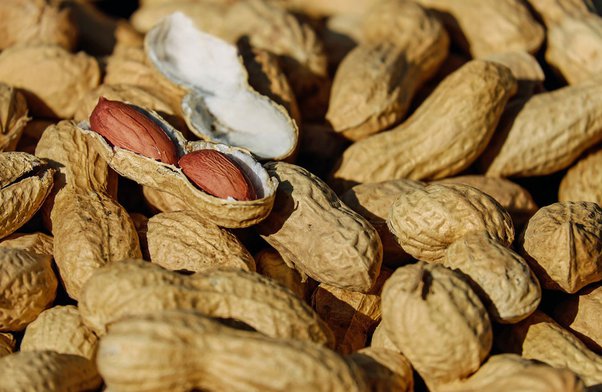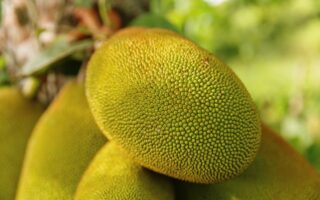Peanuts have long puzzled people with their ambiguous classification as fruits or vegetables. In this detailed article, we will delve into the botanical and culinary aspects to uncover the truth behind this classification dilemma. By exploring the characteristics of peanuts, their culinary use, nutritional profile, and the distinctions between fruits and nuts, we aim to provide clarity on whether peanuts should be considered fruits or vegetables.
Are Peanuts Fruit or Vegetable?
Peanuts are neither fruits nor vegetables. Botanically, peanuts are classified as legumes. Legumes are a family of plants that include beans, peas, and lentils. While peanuts may have certain characteristics that resemble fruits, such as developing from a flower and containing seeds, their classification as legumes sets them apart from both fruits and vegetables. In culinary terms, peanuts are often referred to as nuts due to their similar taste and usage in dishes. So, while peanuts may have characteristics of fruits and are commonly categorized as nuts, they are scientifically classified as legumes.
Also Read – Gala vs. Fuji Apples: Exploring the Differences and Delights
Why Are Peanuts Considered a Fruit?
Peanuts are considered a fruit based on their botanical classification. Botanically speaking, fruits are the mature ovaries of flowering plants that develop after fertilization. Peanuts, scientifically known as Arachis hypogaea, are unique in that they are classified as legumes but exhibit certain characteristics that align with the botanical definition of fruits. Here are a few reasons why peanuts are considered fruits:
Reproductive Structure: Peanuts develop from flowers, and the ovary of the flower swells and enlarges after fertilization to form a structure known as a pod or fruit. Inside the peanut pod, the seeds (peanuts) are formed.
Seed Development: Peanuts contain seeds, which are a defining characteristic of fruits. The seeds within the peanut pod develop through fertilization, similar to how seeds develop in other fruits. Each peanut is a mature seed within the pod.
Resemblance to Botanical Fruits: Peanuts share some visual similarities with botanical fruits. The peanut pod, with its protective outer shell and the seeds (peanuts) inside, resembles the structure of certain fruits. This resemblance to fruits can be attributed to the way peanuts develop and their seed-containing nature.
It’s important to note that while peanuts are considered fruits from a botanical perspective, they are commonly referred to as nuts in culinary contexts due to their taste, texture, and usage. So, peanuts exhibit certain characteristics of fruits but are also recognized as nuts in culinary terms.
Why Are Peanuts Not True Nuts?
Peanuts are not considered true nuts from a botanical standpoint. While they are commonly referred to as nuts in culinary contexts, their botanical classification differs. Here are a few reasons why peanuts are not classified as true nuts:
- Botanical Definition: In botanical terms, a nut is a hard-shelled fruit that does not split open to release its seed. True nuts, such as acorns and chestnuts, have a hard, woody outer shell that encloses a single seed. Peanuts, on the other hand, have a soft outer shell that splits open when mature, revealing the two seed halves (the familiar peanut “nuts”).
- Legume Classification: Peanuts belong to the legume family, which includes plants like beans, peas, and lentils. Legumes are characterized by their ability to fix nitrogen in the soil and form pods that contain multiple seeds. Peanuts develop underground, forming their seeds within a pod, which is a distinctive feature of legumes.
- Growth Habit: True nuts generally grow on trees or shrubs, while peanuts grow as an annual herbaceous plant. They have a unique growth habit, with the flowers of the peanut plant being pollinated above ground, and then the developing fertilized ovary (the peanut pod) penetrates the soil to mature and produce the seeds.
Despite not being true nuts botanically, peanuts share similarities with nuts in terms of taste, texture, and culinary usage. This is why they are commonly referred to as nuts in the culinary world and used in a similar manner to other nuts in cooking and baking.
Also Read – Dragon Fruit vs Passion Fruit: What’s The Difference
Is a Peanut a Nut or a Seed?
A peanut is classified as both a nut and a seed, depending on the context in which it is considered.
From a culinary perspective, peanuts are commonly referred to as nuts. They have similar taste, texture, and culinary uses as other nuts like almonds, cashews, or walnuts. In culinary terminology, peanuts are often included in the category of nuts and used in various dishes, desserts, and snacks.
However, from a botanical perspective, peanuts are classified as seeds rather than true nuts. Botanically, a seed is defined as a mature fertilized ovule within a plant’s reproductive structure. In the case of peanuts, the seeds are enclosed within the peanut pod, which develops from the flower’s ovary. Each peanut represents a mature seed within the pod.
Additionally, peanuts belong to the legume family (Leguminosae/Fabaceae), which includes plants that produce seeds within pods, such as beans, peas, and lentils. This further emphasizes their classification as seeds.
So, while peanuts are colloquially considered nuts in culinary terms, they are botanically classified as seeds. The dual classification arises from the distinctions between culinary and botanical classifications.
Difference Between Fruit and Nut
The difference between a fruit and a nut lies in their botanical definitions and characteristics. Here are the key distinctions between fruits and nuts:
- Botanical Definition: Fruits are the mature ovaries of flowering plants that develop after fertilization. They contain seeds and are typically formed from the ovary of a flower. Nuts, on the other hand, are a type of fruit with a hard outer shell that does not split open to release the seed. Nuts have a single seed enclosed within their protective shell.
- Seed Structure: Fruits can have one or multiple seeds embedded within them. The seeds are typically surrounded by fleshy or juicy tissue, as in apples or berries, or encased within a firm structure, as in oranges or melons. Nuts, however, have a single seed surrounded by a hard, woody or stony shell. Examples of true nuts include almonds, hazelnuts, and chestnuts.
- Reproductive Function: Fruits play a vital role in plant reproduction as they protect and disperse seeds. They often attract animals with their enticing colors, aromas, and flavors, ensuring seed dispersal through consumption and subsequent dispersal through animal waste. Nuts, with their hard shells, are adapted for protection and dispersal. They are typically dispersed by animals or rely on natural processes like wind or water for distribution.
- Culinary Use: Fruits are widely used in culinary applications, both in savory and sweet dishes, due to their variety of flavors, textures, and nutritional profiles. They are consumed fresh, used in cooking, or processed into juices, jams, and desserts. Nuts, on the other hand, are known for their distinct flavors and textures. They are commonly used as snack foods, incorporated into baked goods, or used as toppings in various dishes.
In summary, fruits are the mature ovaries of flowering plants that contain seeds and have a diverse range of textures and flavors. Nuts, a type of fruit, are characterized by their hard shells and single seed structure. While fruits play a crucial role in plant reproduction and are enjoyed for their varied taste profiles, nuts have protective shells and are typically used as standalone snacks or ingredients in culinary preparations.
Three Reasons for Peanut Being a Fruit
- Botanical Classification: The primary reason for considering peanuts as fruits is their botanical classification. Botanically speaking, fruits are the mature ovaries of flowering plants that develop after fertilization. Peanuts develop from flowers, and the fertilized ovary swells and enlarges to form a pod or fruit. The seeds (peanuts) are contained within this pod, making peanuts conform to the botanical definition of fruits.
- Seed Development: Another reason for classifying peanuts as fruits is their mode of seed development. Like other fruits, peanuts contain seeds. The seeds within the peanut pod undergo fertilization and maturation, similar to how seeds develop in other fruits. Each peanut represents a mature seed within the fruiting structure of the peanut plant.
- Visual Resemblance to Fruits: Peanuts bear some visual resemblance to botanical fruits, which further supports their classification as fruits. The peanut pod, with its protective outer shell and the seeds (peanuts) inside, shares similarities with certain fruits in terms of their structure. While the pod may have a different texture and appearance than typical fleshy fruits, it still exhibits characteristics that align with the general notion of fruits.
These three reasons—botanical classification, seed development, and visual resemblance—provide a basis for considering peanuts as fruits. While they may be referred to as nuts in culinary contexts, understanding their botanical classification helps to appreciate their unique characteristics and placement within the broader plant kingdom.
Also Read – Red vs. White Dragon Fruit: Exploring the Differences?
Conclusion
In Conclusion After an in-depth exploration of peanuts’ botanical classification, culinary use, and the distinctions between fruits and nuts, we can draw a conclusion regarding whether peanuts are fruits or vegetables.
While peanuts are botanically classified as fruits, they are commonly referred to as nuts in culinary contexts. The complexity of their classification reflects the multifaceted nature of peanuts. Understanding the botanical and culinary perspectives allows us to appreciate the unique characteristics and versatility of this remarkable legume.




